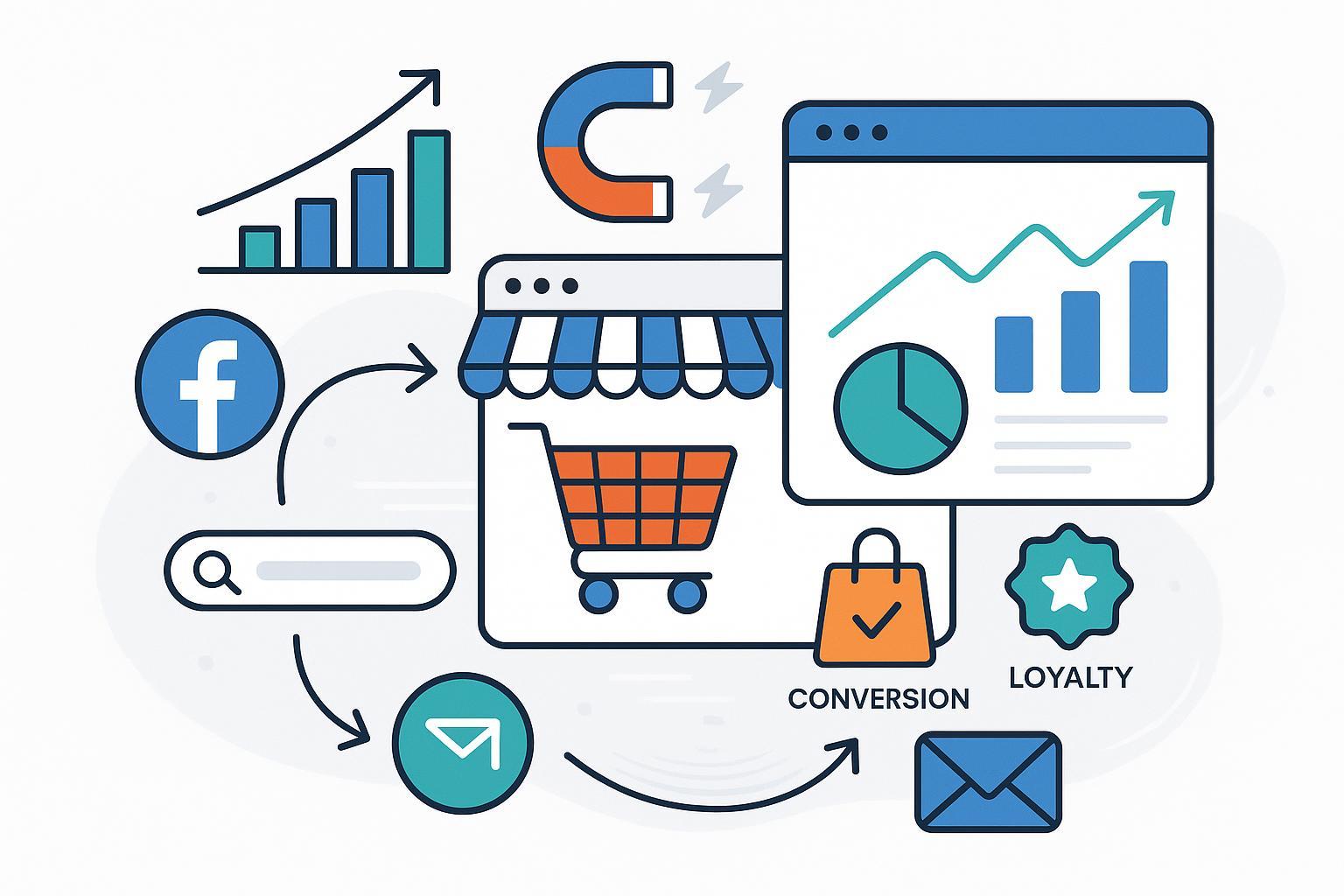Exploring the Key Objectives of Advertising Campaigns: What You Need to Know

What Are the Objectives of Advertising Campaigns?
Advertising campaign objectives are the specific, measurable goals marketers set for ad initiatives—think raising brand awareness, driving website traffic, boosting sales, or building customer loyalty. These objectives must be actionable, time-bound, and tied directly to business strategy (AMA). In e-commerce, objectives are increasingly analytics-driven, tracked in real time using digital tools, and mapped to key stages of the customer journey (Shopify Encyclopedia).
The Core Objectives Explained—and How to Measure Them
1. Brand Awareness
Purpose: Make your brand known to new audiences.
Measurement: Impressions, reach, brand recall surveys, and branded search volume.
E-commerce Example: A Shopify merchant leverages broad display ads and influencer campaigns to increase product searches and direct site visits.
2. Driving Website Traffic
Purpose: Bring potential buyers to your online store or landing page.
Measurement: Website sessions, click-through rate (CTR), unique visitors, cost per click (CPC).
E-commerce Example: DTC brands use targeted Google and Meta ads to funnel high-intent audiences to promotional pages, optimizing ad creative based on bounce rates and session duration.
3. Generating Conversions & Sales
Purpose: Motivate visitors to complete a purchase or desired action (adding to cart, signing up, etc.).
Measurement: Conversion rate, number of transactions, revenue per visitor, return on ad spend (ROAS), cost per acquisition (CPA).
E-commerce Example: During a seasonal sale, a retailer uses remarketing campaigns to encourage abandoned cart users to convert, tracking uplift via platform analytics.
4. Building Retention and Loyalty
Purpose: Encourage repeat business and foster long-term brand relationships.
Measurement: Repeat purchase rate, customer lifetime value (CLV), churn rate, email re-engagement metrics.
E-commerce Example: Subscription box brands launch loyalty programs and automated post-purchase email sequences, analyzing increases in repeat purchases and upsells.
Connecting Objectives to KPIs, Funnel Stages & Analytics Tools
| Objective | KPI Examples | Funnel Stage | Analytic Feature (Attribuly) |
|---|---|---|---|
| Brand Awareness | Impressions, Reach | Top (Awareness) | Channel source tracking, branded searches |
| Website Traffic | Sessions, CTR | Mid (Consider) | Traffic source analytics, segmentation |
| Conversions & Sales | CVR, ROAS, CPA | Bottom (Act/Buy) | Multi-touch attribution, server tracking |
| Retention & Loyalty | Repeat rate, CLV | Post-purchase | Automated triggers, segmentation, retargeting |
How Analytics Platforms Like Attribuly Empower Campaign Success
Setting objectives is just the start—advanced analytics platforms transform these goals into measurable outcomes:
- Multi-Touch Attribution: Understand every step of your customer’s journey—from first ad view to repeat purchase. Attribuly shows which channels drive each objective and credits revenue accordingly.
- Channel & Traffic Analytics: Easily see which platforms (Google, Meta, TikTok, email) deliver awareness, clicks, or sales, enabling precise budget allocation.
- Segmentation & Automated Retargeting: Group audiences based on behavior (like recent purchasers or high-value browsers) and trigger personalized campaigns to boost retention or conversion.
- Real-World Example: A Shopify retailer used Attribuly to unify data from all ad channels, automate retargeting for holiday shoppers, and saw a 20% increase in conversions by optimizing investment towards the best-performing touchpoints.
Learn more about how Attribuly can solve your e-commerce attribution and analytics challenges.
Best Practices for Setting Advertising Campaign Objectives
- Set SMART Goals: Ensure objectives are Specific, Measurable, Achievable, Relevant, and Time-bound.
- Map Objectives to Customer Journey: Align measurement with funnel stages—from awareness-broadening ads to retention-driving loyalty campaigns.
- Leverage Attribution Tools: Use platforms like Attribuly for comprehensive tracking, automated segmentation, and actionable reporting.
- Continuously Optimize: Analyze data, test campaigns, and refine objectives as customer behavior evolves.
Explore more:
- What is Multi-Touch Attribution? (Attribuly)
- Understanding the Customer Journey (Shopify Blog)
Ready to make every advertising objective count? Try Attribuly and put analytics-powered goals into action.
